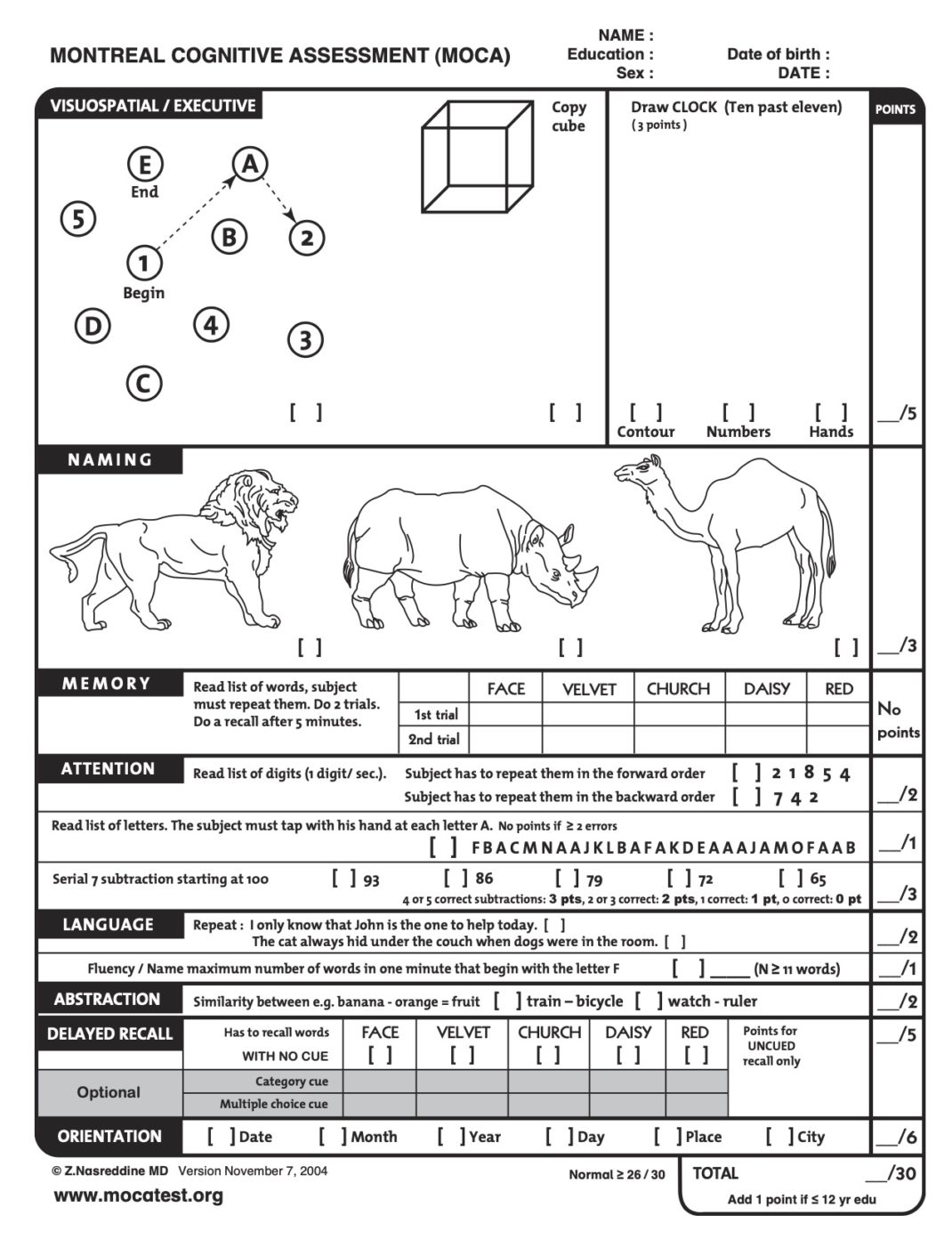

One point each is awarded for having a contour, having numbers, and having hands. (3 points) In the “Visuoconstructional Skills (Clock)" portion, a patient is asked to draw a clock.If a three-dimensional drawing with relatively accurate lines is drawn, the point is awarded. (1 point) The “Visuoconstructional Skills (Cube)" segment relays instructions to copy a drawing of a cube.(1 point) In “Alternating Trail Making," a patient is told to draw a line from letters to numbers, in ascending order (1-A-2-B-3-C-4-D-5-E), without crossing any lines.There are 11 sections of the assessment, with a total of 30 possible points: The test is made freely available to any clinician, and its international use allows it to be administered in 35 different languages.

The MoCA is administered over approximately ten minutes, with 30 possible points. The assessments in the test attempt to gauge areas of language, visuospatial abilities, memory and recall and abstract thinking, to give a representation of a person's current cognitive ability. The Montreal Cognitive Assessment (MoCA), developed in Canada in 1996, was intended to be a means of accurately detecting levels of cognitive impairment. The Montreal Cognitive Assessment is an accurate test that can give examiners insight into a person's cognitive ability. To detect Alzheimer's disease and other forms of dementia early on and monitor progression, there are several cognitive evaluations that can assist professionals in a diagnosis.


 0 kommentar(er)
0 kommentar(er)
